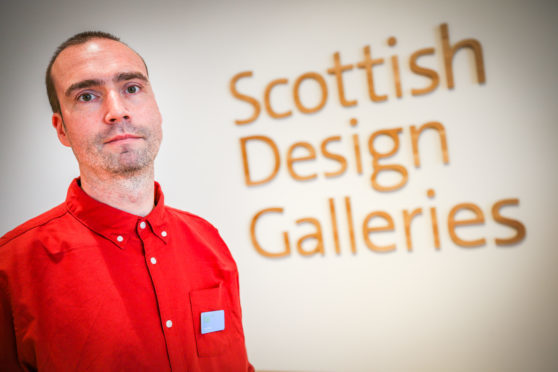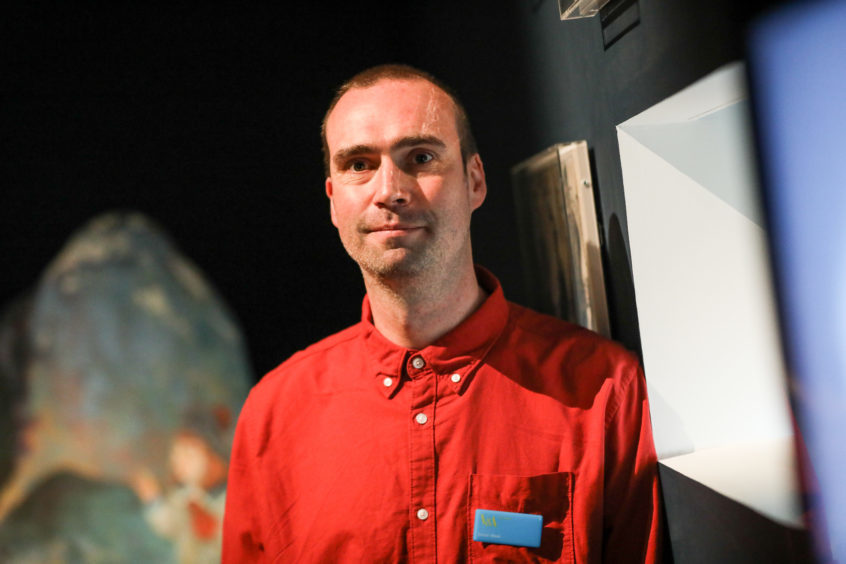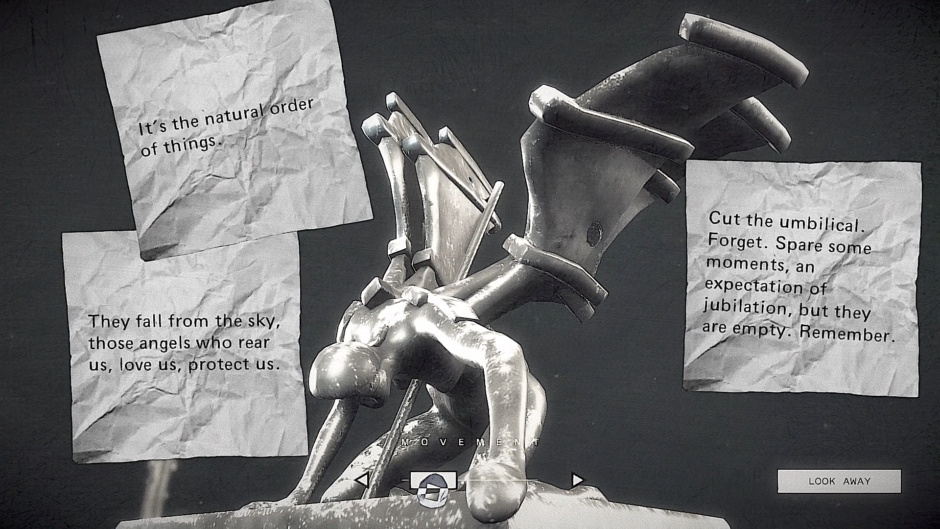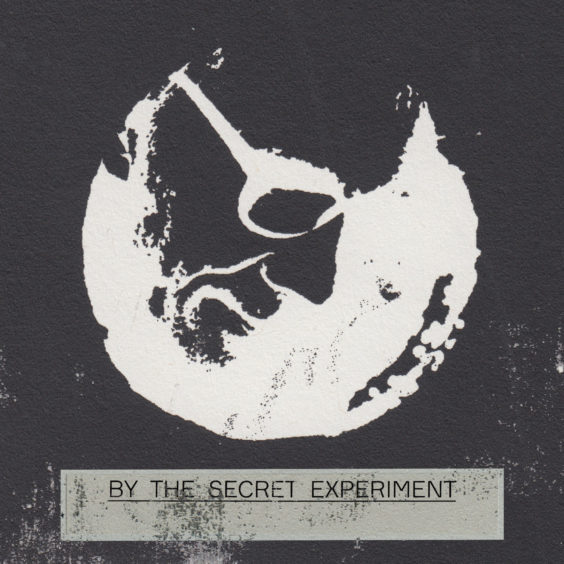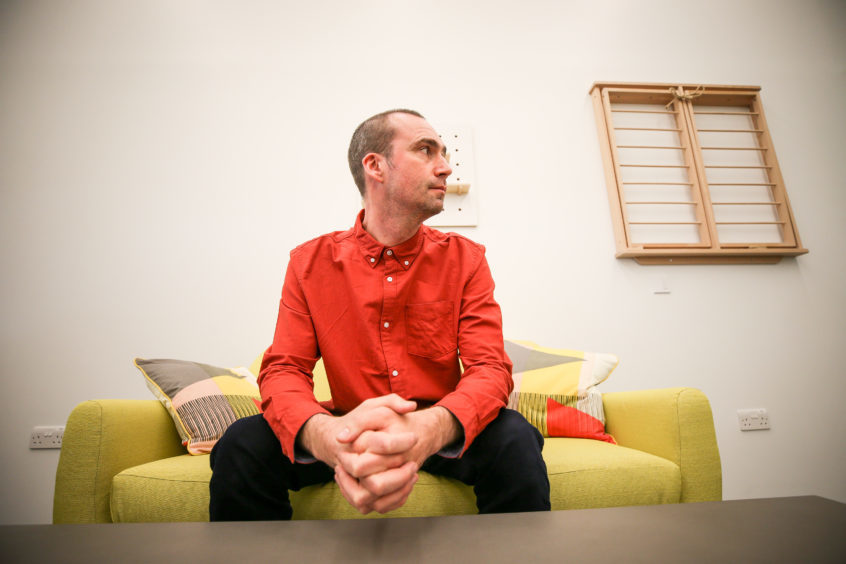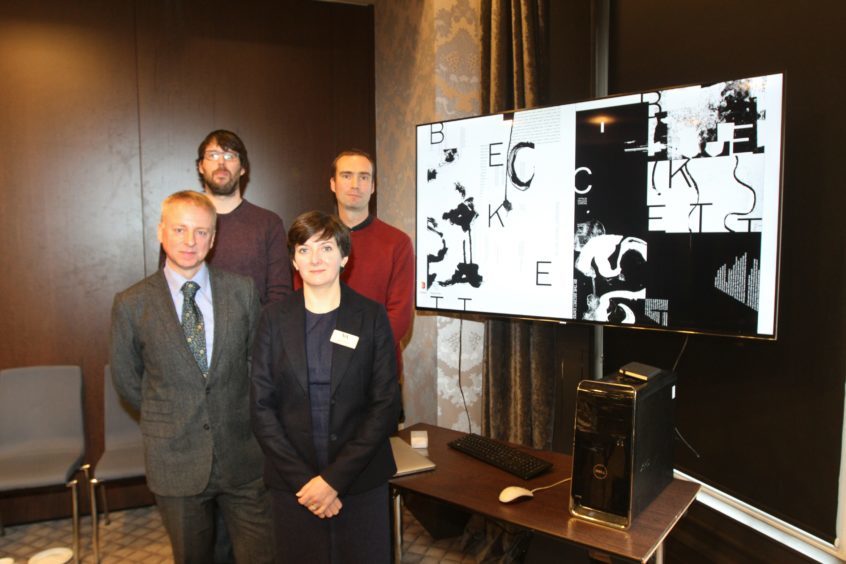Simon Meek is V&A Dundee’s first designer in residence. He tells Gayle Ritchie how he designs “playable stories” through music, storytelling and gaming…
Based at V&A Dundee, Simon Meek reckons he’s got the best working space in Scotland, if not the UK.
As the museum’s first designer in residence, his office has a view to die for, overlooking RRS Discovery and the silvery Tay.
“Entering the building sends a shiver up my spine,” he muses.
“Passing the Scottish Design Galleries and Ocean Liners exhibition is inspiring, and when I reach my studio, I’m fully charged and raring to go.”
Simon, who was made a V&A Dundee Design Champion in late 2017, feels truly humbled – and honoured – to have been chosen for the coveted role of designer in residence.
“To be part of the building and its ambitions as the first design museum in Scotland is mindblowing,” he says.
“Everyone who works at V&A Dundee is incredibly passionate about the space, its role and the future, so it’s hard not to get swallowed up in the momentum.”
Simon’s role, which is part-backed by the National Theatre of Scotland, is about letting people experience the process of design and is interactive in terms of involvement with visitors.
“There’s also an expectation that a work emerges – something that can potentially exist in the museum for a time,” he says.
“I’ll be working with the outreach and education teams in V&A Dundee to help define what the residency is going forward, which could include workshops and the like. It’s a work in progress.”
Simon got a call “out of the blue” offering him the role.
He reckons his focus on storytelling and the fact his latest release, Beckett – a surreal noir made as a videogame – is inside the Design Galleries, put him on V&A Dundee’s radar.
“Beckett is a work of digital fiction that I wrote, scored, designed and directed,” he says.
“It’s the story of a missing-person’s detective who’s called upon to track down a young man suffering from a reality-altering condition.
“Your role, as player, is to navigate Beckett around locations, exploring and speaking with characters.
“It feels like a living digital installation, with a visual aesthetic akin to European cinema and a story that draws from J.G. Ballard and William Burroughs.”
But what makes Beckett such a powerful experience, says Simon, is its reliance on the audience’s imagination.
“Everything is skewed and morphed – characters can be anything from a crushed beetle to an old brooch, a slice of meat or a theatre mask. Everything is a jump off point for the player’s imagination. Even the sound of conversation is built from sounds that represent the character rather than the notion of a voice, so Beckett has a guttural cough, a bartender the shake of a cocktail mixer, or an angry worker a hammer drill.”
Another of Simon’s projects is Fragments of a Fictional Place.
“The idea is to create an evolving series of character vignettes set in a fictional town in Scotland,” he explains.
“Each of these I’m intending to write and adapt as artefacts that can exist in the physical world.
“This transference of story to artefact is where the design challenge comes in.
“My work is naturally a mash of design disciplines, often drawing from more left-field creators – disrupters, people who challenge convention and subvert the norm.
“Each ‘fragment’ in my residency project aims to do just that – taking a story and letting it shape its expression, letting me devise ways to connect to the audience through non-traditional means.”
Based in Glasgow with his wife, three girls and a basset hound, Simon, whose company is called The Secret Experiment, is commuting to Dundee three or four days a week, staying in a flat in Carnoustie.
For Simon, games design is a “liberation architecture” for storytelling.
“It’s a form that comes without limitations in terms of artistic expression,” he says.
“I feel I’m a games designer as much as I’m a graphic designer as much as I’m an audio designer. I’m about the destruction of descriptors. If the story I’m dreaming up works best as a videogame, I’ll turn to that medium for its delivery.
“But rarely will it stop there. If you take Beckett, for example, the vinyl record version was released before the game, and I’ve since written an array of flash-fictions that extend outwards from the digital version.
“For anyone who has played Beckett on their computer, they’ll notice the tactile nature of the experience – filled with photography, text, stop frame animations, so it’s very much pushing the boundaries of what people might regard as a videogame. My career was founded in journalism and TV production, so narrative underpins everything I do.”
Alongside Beckett and Fragments, Simon produced a digital adaptation of John Buchan’s The 39 Steps and has various projects ticking away in the background.
“Games design is maturing, breaking free of the shackles of ‘games’ in a traditional sense,” he reflects.
“It’s really exciting and I’d encourage everyone to be part of it.
“These stories aren’t just for gamers. They should be inclusive and aim at the global audience who love stories.”
For more information, see www.facebook.com/thesecretexp/
